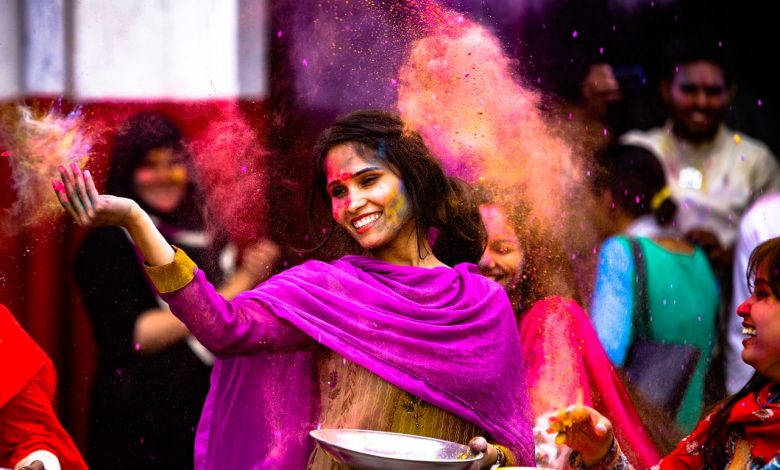Best Things to Do in India

India has a lot to offer tourists.
Taj Mahal
- The Taj Mahal, built by Shah Jahan in 1653, is the largest mausoleum in the world.
- It took 22 years to build and required more than 20,000 workers from across India to complete.
- It’s made of white marble and features a dome that rises above its four minarets.
Agra Fort
Agra Fort is a UNESCO World Heritage Site and one of the most popular tourist attractions in India. The fort was built by Emperor Akbar in 1565, who ruled over much of northern India at that time. It’s also known as “Akbar’s Palace” or “Red Fort,” but it’s actually not those things–it’s technically just a small section of the larger Agra Fort complex.
The palace itself contains many beautiful buildings and courtyards, including an elaborate mosque (Jama Masjid), several palaces for royalty or other important people to stay in (including one where Shah Jahan lived), gardens with fountains and ponds filled with fish, private quarters for servants who worked there…and more!
Qutub Minar
Qutub Minar is a 73-metre high tower in Delhi. It was built by Qutb-ud-din Aibak in 1199 to commemorate the victory of Islam over Hinduism and to declare himself as a new ruler. The tower is an example of Indo-Islamic Architecture, which combines elements from both Indian and Islamic styles.
The structure has five storeys made up of red sandstone with alternating bands of white marble or limestone, with two side pavilions at each level (except for the top). The first three storeys are octagonal while the fourth one is rectangular and serves as a balcony for viewing the grounds below; similarly, each floor has niches with balconies on all four sides except that on which we enter through its arched doorway leading into its inner chamber where there are carvings depicting stories from Hindu mythology such as Shiva dancing around fire while playing drums called damru so he could burn away his sins after killing his wife Sati because no one else would marry her after she died since she was considered impure due to having married someone else before marrying Shiva who then went back on his promise not knowing she had been reincarnated earlier than expected so this meant she didn’t really die but rather became part human/part divine depending on how much time passed between their past lives together without any memory whatsoever even though everyone else knew what happened between them during those missing years when both were mortal beings living together happily ever after…
Red Fort
The Red Fort is a UNESCO World Heritage Site and was built by Mughal emperor Shah Jahan in 1639. It’s one of the best places to visit in Delhi, India.
The fort has several buildings that have been converted into museums and gardens: the palace, mosque and temple are all open for tours during certain hours of the day.
Golden Temple, Amritsar
The Golden Temple, also known as Harmandir Sahib, is a Sikh temple located in Amritsar, Punjab. It’s one of the most important pilgrimage sites for Sikhs.
The temple was founded by Guru Ram Das in 1577 and completed by his son Guru Arjan Dev in 1604. The structure stands on an island about 100 yards (91 m) from shore and has five entrances leading into its inner sanctum where there is a tank filled with holy water called ‘Amrit’ (nectar).
The main building has four towers: one each at each corner and another in between these four towers that rises above them all at 130 feet high making it visible from anywhere within Amritsar city limits; hence earning its name “Singh” or Lion which means brave & fearless person who cannot be defeated by anyone else easily!
Jantar Mantar
Jantar Mantar is a collection of architectural astronomical instruments. The observatory was built in the 17th century by Maharaja Jai Singh I, who ruled over the city of Jaipur, Rajasthan. There are five observatories in Jaipur: Jantar Mantar, Hawa Mahal (Palace of Winds), Rambagh Palace and Albert Hall Museum.
Jantar Mantars were built as tools for calculating time and measuring astronomical events such as eclipses or solar transits. This one also houses an accurate sundial that tells you what time it is at any given moment during daylight hours!
Jaipur City Palace and Hawa Mahal
Jaipur City Palace and Hawa Mahal is a UNESCO World Heritage Site. It was built in 1727 by Maharaja Sawai Pratap Singh, who ruled from 1778 to 1803. The palace complex covers an area of 600,000 square feet and contains many buildings including the Diwan-e-Khas (Hall of Private Audiences), Shish Mahal (Palace of Mirrors) and Sheesh Mahal (Palace of Glass).
The Hawa Mahal (“Palace of Winds”) is one of the most photographed buildings in India because it has beautiful arched windows on each floor that look out onto the street below; these windows allow air flow during hot summers while keeping out prying eyes.
India has a lot to offer tourists.
India is a country with a rich history and culture, which has influenced most of its neighboring countries. The country is home to many beautiful places to visit, including the Taj Mahal in Agra and the Golden Temple in Amritsar. India is also known for its delicious food, colorful fabrics (like saris), vibrant festivals, yoga and meditation practices that originated there centuries ago.
India has much more than just these things though–it’s also a great place for tourists from all over the world!
Conclusion
India is a country with a rich history and culture. It’s also one of the most visited countries in the world, so it makes sense that there are so many things to do here! Whether you’re looking for something adventurous or relaxing, there’s something out there for everyone.



